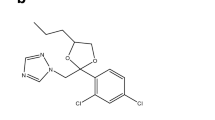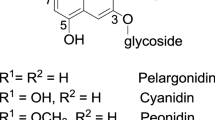Abstract
Haloanisoles are responsible for musty or mouldy off-flavours in wine. These molecules are extremely odorous and they alter wines in an irreversible way. The origin of haloanisoles can be attributed to the biodegradation of halophenols, which can be found in winery environments. Various materials including oak products (wood tanks, barrels, chips, staves) may be contaminated by haloanisoles and halophenols. Once polluted, these materials may release these molecules into wine. Requests for analyses of haloanisoles and halophenols in oak wood have gradually increased in recent years, above all from the coopers, who want to prove the quality of their products. However, the lack of an official testing method is an obstacle for the performance monitoring of laboratories. In response to these challenges, BIPEA organises, since October 2013, regular proficiency-testing schemes (PTS) for the detection and quantification of these molecules in oak wood. For each test, the statistical treatment of laboratories’ results is performed according to ISO 13528. These PTS enable the participating laboratories to compare with each other, draw up a general inventory of their analytical skills and improve their performances for the detection and quantification of haloanisoles and halophenols in oak wood.




Similar content being viewed by others
References
Buser HR, Zanier C, Tanner H (1982) Identification of 2,4,6-trichloroanisole as a potent compound causing cork taint in wine. J Agric Food Chem 30:359–362
Callejón RM, Ubeda C, Ríos-Reina R, Morales ML, Troncoso AM (2016) Recent developments in the analysis of musty odour compounds in water and wine: a review. J Chromatogr A 1428:72–75
Chatonnet P, Bonnet S, Boutou S, Labadie MD (2004) Identification and responsibility of 2,4,6-tribromoanisole in musty, corked odors in wine. J Agric Food Chem 52:1255–1262
ISO 13528 (2015) Statistical methods for use in proficiency testing by interlaboratory comparisons
ISO 20752 (2014) Cork stoppers—determination of releasable 2,4,6-trichloroanisole (TCA)
ISO/IEC 17025 (2017) General requirements for the competence of testing and calibration laboratories
Acknowledgements
BIPEA acknowledges the collaboration of the French Coopers Federation (FFT) and all the laboratories participating in these PTS.
Author information
Authors and Affiliations
Corresponding author
Additional information
Publisher's Note
Springer Nature remains neutral with regard to jurisdictional claims in published maps and institutional affiliations.
Rights and permissions
About this article
Cite this article
Mazzoni, C., Tirard, A., Boubetra, A. et al. Proficiency-testing scheme for haloanisoles and halophenols in oak wood. Accred Qual Assur 25, 173–178 (2020). https://doi.org/10.1007/s00769-020-01428-6
Received:
Accepted:
Published:
Issue Date:
DOI: https://doi.org/10.1007/s00769-020-01428-6




